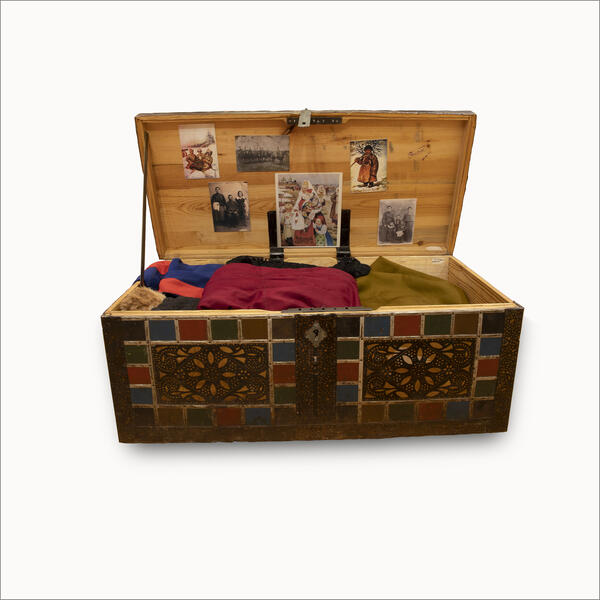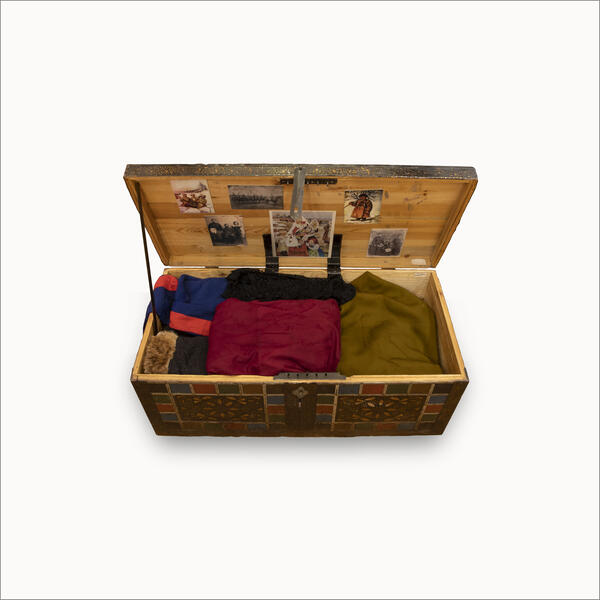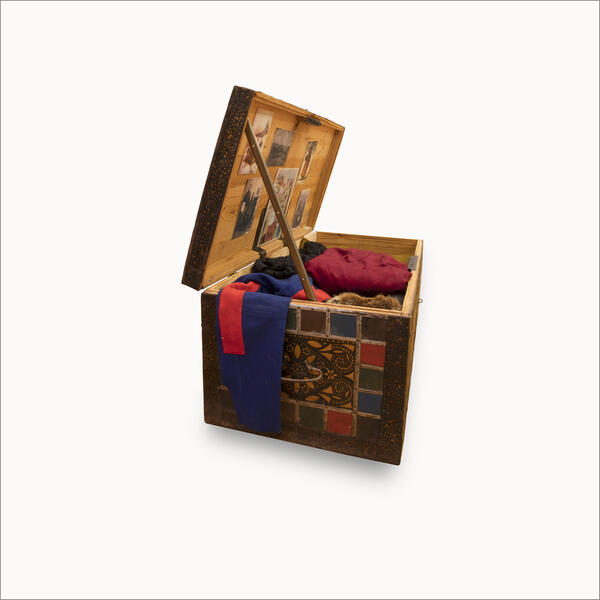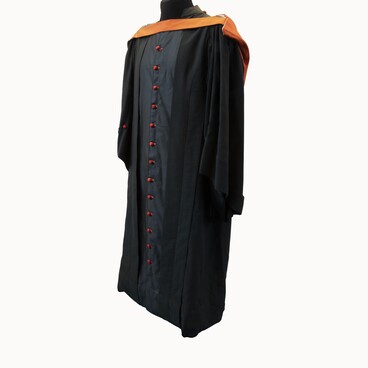This wooden iron-bound storage chest with metal handles, a lock, and a lid with hinges was manufactured at the Petrokamenskoe Furniture Factory on November 22, 1967. It used to belong to Anna Antonovna Dolgova who was a cook and a domestic helper at the Sholokhov house.
Dolgova was born in the Golovskoy hamlet of the Bukanovskaya stanitsa. In the 1930s, her parents were “dekulakized” and exiled to Siberia. Having been left completely alone, Anna went to the Vyoshenskaya stanitsa where she was hired as a helper by Mikhail Sholokhov’s mother Anastasia Danilovna.
She was affectionately called Nyura and Annushka and valued for her loyalty and culinary skills. Dolgova stayed with the Sholokhovs for her entire life and spent over 45 years at their place. Annushka did not get married or have children of her own, which is why she loved Sholokhov’s children and grandchildren as her own, and they returned her affection.
In the Don region, each Cossack family had a storage chest which was an integral element of the interior. It was placed in the kitchen, bedroom, or upper room, and its purpose depended on its place. For example, if a storage chest was located in habitable rooms and covered with colorful patchwork quilts and a rug, it could serve as a bed. It was also used for storing clothes and bedding. A kitchen chest was used to keep crockery, utensils, and food. If a storage chest was completely covered with metal sheets and kept outside, it could be used to store grain or animal feed.
There were storage chests of various sizes: apart from large wooden chests kept at home, the Cossacks also had wicker “travel” trunks with handles, musical chests that played music when the cover or lock was opened, and small, elegant chests for valuable possessions. A storage chest was an integral element of a bride’s dowry and was used to store clothes and accessories. When leaving for military service, a Cossack would often bring along an army trunk.
In the 1930s, during active dekulakization and collectivization in the Don region, people tried to hide their food supplies in storage chests, covering them with clothes. Inspectors checked the content of such chests with special hooks and took away any food they found. For hiding supplies, families were punished with such severe measures as an exile, hard labor, and execution.
Dolgova was born in the Golovskoy hamlet of the Bukanovskaya stanitsa. In the 1930s, her parents were “dekulakized” and exiled to Siberia. Having been left completely alone, Anna went to the Vyoshenskaya stanitsa where she was hired as a helper by Mikhail Sholokhov’s mother Anastasia Danilovna.
She was affectionately called Nyura and Annushka and valued for her loyalty and culinary skills. Dolgova stayed with the Sholokhovs for her entire life and spent over 45 years at their place. Annushka did not get married or have children of her own, which is why she loved Sholokhov’s children and grandchildren as her own, and they returned her affection.
In the Don region, each Cossack family had a storage chest which was an integral element of the interior. It was placed in the kitchen, bedroom, or upper room, and its purpose depended on its place. For example, if a storage chest was located in habitable rooms and covered with colorful patchwork quilts and a rug, it could serve as a bed. It was also used for storing clothes and bedding. A kitchen chest was used to keep crockery, utensils, and food. If a storage chest was completely covered with metal sheets and kept outside, it could be used to store grain or animal feed.
There were storage chests of various sizes: apart from large wooden chests kept at home, the Cossacks also had wicker “travel” trunks with handles, musical chests that played music when the cover or lock was opened, and small, elegant chests for valuable possessions. A storage chest was an integral element of a bride’s dowry and was used to store clothes and accessories. When leaving for military service, a Cossack would often bring along an army trunk.
In the 1930s, during active dekulakization and collectivization in the Don region, people tried to hide their food supplies in storage chests, covering them with clothes. Inspectors checked the content of such chests with special hooks and took away any food they found. For hiding supplies, families were punished with such severe measures as an exile, hard labor, and execution.




